Lifetime Usage
Green Initiatives
in Our Projector Business
Reducing Our Carbon Footprint Through Innovation
Efficient Projection for a Sustainable Future
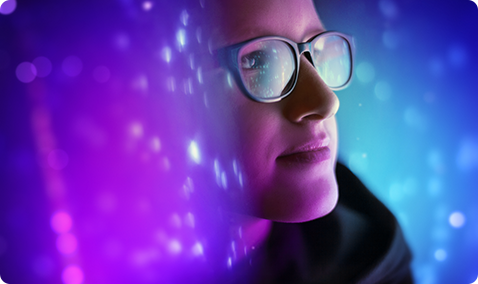
About 80% of the Panasonic Group's carbon dioxide emissions in the fiscal year 2020 were attributed to emissions during product usage. While continuing to enhance product performance is a core part of our strategy in the projector business, we also believe that improving energy efficiency during usage is essential in creating a sustainable society.
Enhancing Projection Efficiency
Enhancing the lumens-per-watt ratio is pivotal in boosting energy efficiency. Our engineers are continually refining projector optical engines to heighten light-collection efficiency, optimizing brightness and cutting power consumption. Transformer technology has advanced in parallel, enabling more efficient current conversion for smaller, lighter products. Our PT-VMZ71 Series, for example, is about 20% more energy-efficient than the previous PT-VMZ60 Series, significantly reducing power costs and global carbon emissions in this high-capacity market.
Note: Power saving calculation derived from a comparison between the PT-VMZ50 (5,000 lm, max. power consumption 370 W, launched in February 2019) and the PT-VMZ51S (5,200 lm, max. power consumption 300 W, launched in February 2022).

Lower Consumption with Eco Features
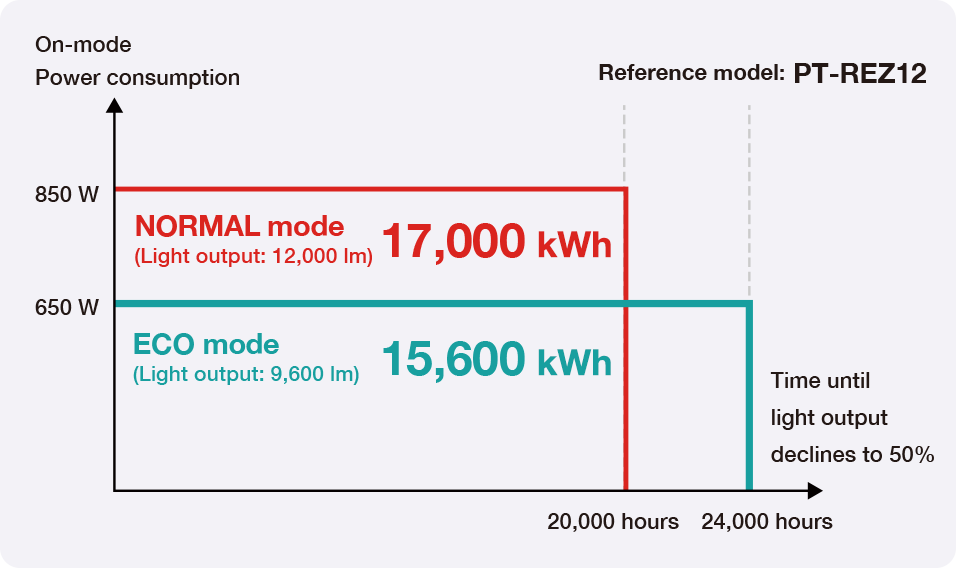
We prioritize sustainability with features designed to conserve energy and extend product lifespans. These include auto brightness adjustment to suit ambient light levels, light-source shutdown when no signal is detected, and an ECO mode when full brightness isn’t needed. Using the PT-REZ12 as an example, changing from [NORMAL] to [ECO] mode reduces light output from
12,000 lm1 to 9,600 lm1 but extends the time until light output declines to 50% from 20,000 hours2 to 24,000 hours2. Assuming a 13-year application requiring 24/7 projection, choosing ECO over NORMAL results in resource savings equivalent to one projector replacement. In effect, the projector would be replaced five times instead of six in this timeframe, reducing the ecological impact of extra manufacturing, transportation, installation, and disposal. Furthermore, in [ECO] mode, on-mode consumption drops from 850 W3 to 650 W3. When considering the total power consumption up to the time when the light output is halved, it leads to a saving of 1,400 kilowatt-hours. Panasonic is committed to providing eco features tailored to your usage scenarios, promoting sustainability and responsible resource utilization.
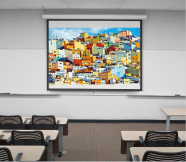
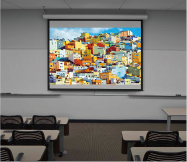

Note: Function availability varies by model. The usage application example assumes that subsequent models released after the PT-REZ12 maintain similar performance and specifications. Actual replacement times may vary based on usage patterns and conditions. Please consult the operating manual of specific models for more information.
1 Measurement, measuring conditions, and method of notation all comply with ISO/IEC 21118: 2020 international standards. Value is the average of all products when shipped.
2 Around this time, the light output will have decreased by approximately 50 %. IEC62087: 2008 Broadcast Contents, NORMAL Mode, Dynamic Contrast [3], temperature 35 °C (95 °F), elevation 700m (2,297 ft) with 0.15 mg/m3 of airborne particulate matter. Light-source lifetime may be reduced depending on environmental conditions. Replacement of parts other than the light source may be required in a shorter period. Estimated maintenance time varies depending on the environment.
3 Measurement, measuring conditions, and method of notation all comply with ISO/IEC 21118: 2020 international standards. On-mode power consumption measured at 25 °C (77 °F) operating temperature at an altitude of 700 m (2,297 ft).
Reduced Standby Power Consumption
In compliance with the European Commission ErP Ecodesign Directive Lot 6, current Panasonic laser projectors are equipped with an Eco Standby Mode which enables standby power consumption of just 0.5 W or less. This enables the provision of more efficient and energy-saving projectors, especially in applications where large projector fleets are used, such as schools, offices, and museums.
Creating Stable, Dependable,
Sustainable Products

Quality Testing for Reliability
Since 1977, our close partnerships have allowed us to incorporate user feedback to refine each product generation. Stability, reliability, and longevity are paramount to our customers. Consequently, we subject our products to exhaustive testing in harsh conditions—more severe than most actual usage environments. Drawing from this experience, we conduct over 100 quality tests and verifications to reduce defects in shipped products and secure stable long-term operation while supporting various installation environments and transportation conditions to meet the needs of our customers. In this way, our customers enjoy access to more efficient and sustainable projection over the life of the product.

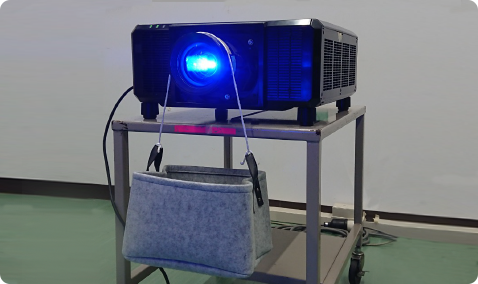
Use of Long-Life Components
We released our first mercury-free laser light source projector, the PT-RW330, in 2013, eliminating the need for lamp replacement and disposal after several thousand hours. Laser light sources typically support a maintenance-free operating life of 20,000 hours, reducing waste and resources. Our SOLID SHINE Laser technology is supported by streamlined cooling systems, some even filterless or with reusable filters, reducing parts inventories, maintenance time, resource use, and waste.
Maintenance: lamp vs. laser
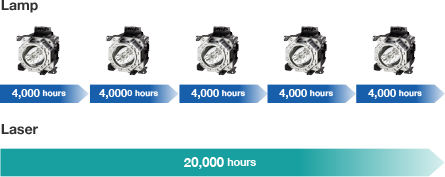
Note: Lamp replacement cycle is approximate and varies by model.
Note: At around 20,000 hours, the light output will have decreased by approximately 50 %. Varies depending on the projector specification, settings, and operating conditions. Refer to individual product specifications for details. Light-source lifetime may be reduced depending on environmental conditions. Replacement of parts other than the light source may be required in a shorter period. Estimated maintenance time varies depending on the environment.
Reduced Consumable Parts Wastage
All Panasonic DLP™ laser projectors currently in production feature high-efficiency cooling systems that eliminate the need for an air filter. Panasonic’s LCD laser projectors, meanwhile, feature our ECO Filter, which supports a longer replacement cycle than conventional air filters. When filter maintenance is due, the ECO Filter can be washed and reused. We strive to be efficient and reduce resources by eliminating or reducing parts waste.
Note: The filter replacement cycle varies depending on the model, usage patterns, and usage conditions. ECO Filter may be washed and reused up to two times. For more information, please refer to the Operating Manual of a specific compatible projector model.
Dust Resistant to Extend Product Longevity
To extend the lifespan of specific new-generation Panasonic laser projector models in challenging environments, we have developed an optical engine and laser light source module that conforms to IEC Standard 60529/JIS C0920 IP5X (Dust Protected type), enhancing dust resistance.
Note: The Dust Protected performance of compatible models is not guaranteed to be free from damage or failure under all conditions (environment with conductive dust, etc.). Please use an enclosure in environments with smoke containing oil, salt, and moisture.

Contributing to a Society United by Emotion
The Social Impact of Public Entertainment
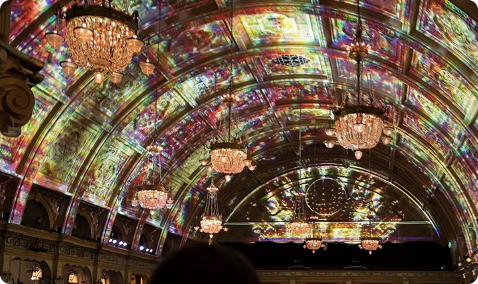
The global pandemic highlighted the importance of public entertainment that brings people together to share emotions. Projection technology is crucial in enhancing the value of various forms of public entertainment, such as themed, location-based, and educational entertainment. Furthermore, public participation in live entertainment using projection technology allows people to feel present even from distant locations. This aligns with the principles of IDEA (Inclusivity, Diversity, Equity, and Accessibility), enabling individuals with disabilities or mobility challenges to participate. Panasonic remains steadfast in its commitment to the entertainment industry and IDEA principles, uniting people and society in shared experiences that surprise, delight, and inspire.
Supporting Sustainable Work and Learning Styles
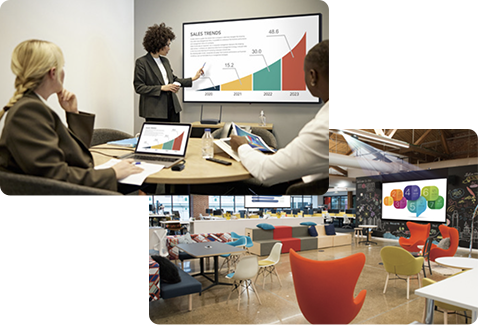
In the transition from remote work to hybrid models, companies and schools are improving communication quality through the use of visual media. This innovation, supported by projection technology, not only enhances productivity but also aligns with sustainability goals by reducing reliance on paper and the resources required for physical gatherings. Especially in the realm of education, large projection screens are creating environments that promote the use of digital textbooks and interactive learning methods. This shift contributes to the equitable availability of high-quality educational opportunities through visual communication technology, reducing our dependence on traditional printed materials and physical meetings.
- Environmental Contribution
- Customer Workflow and
Social Contribution to the World



